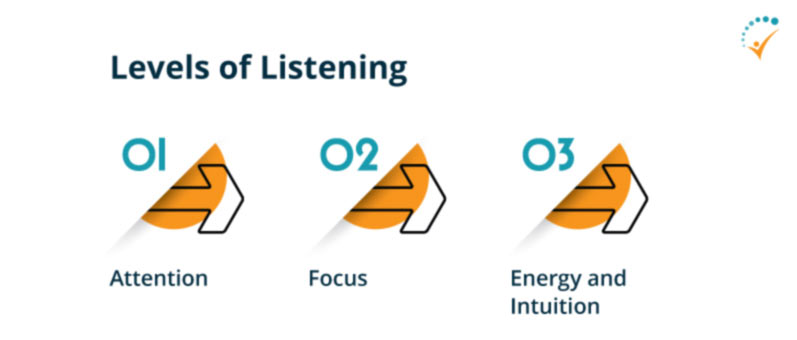
Agilemania
Agilemania, a small group of passionate Lean-Agile-DevOps consultants and trainers, is the most tru... Read more
![]() Get Your AI-Enabled Scrum Master Certification for Just ₹2,500 (Save 75%)!
Get Your AI-Enabled Scrum Master Certification for Just ₹2,500 (Save 75%)!
Scrum.Org
SAFe®
ICAgile
Scrum Alliance
Technical Agility
Kanban
Business Analysis
Project Management
AI-Enabled
Agilemania Academy
Scrum.Org
SAFe®
ICAgile
Scrum Alliance
Technical Agility
Kanban
Business Analysis
Project Management
AI-Enabled

Agilemania
Agilemania, a small group of passionate Lean-Agile-DevOps consultants and trainers, is the most tru... Read more

"One of the most sincere forms of respect is actually listening to what another has to say." --Bryant H. McGill
Listening is the way we connect with people. They can tell when the connection is there and will be more open to sharing and trying new ideas with you. Engaged Listening helps us to give full attention to the words, nuances, and unspoken meaning of our clients’ communication. Levels of Listening (As per Co-active Coaching Book)

Level I – Attention is on ourselves. Dialogue is all about us, not about the person we’re talking with.
Level II – Focus is on the other person, their words, tone, pace, feelings, and even what is not said.
Level III – Goes way beyond words. Involves energy and intuition, all the senses.
Give full attention to the words, nuances, and the unspoken meaning of the client’s communication. The coach is more deeply aware of the client, his or her concerns, and the source of the issue by listening beyond what the client is able to articulate. - International Association of Coaching
Listening is the way we connect with people. They can tell when the connection is there and will be more open to sharing and trying new ideas with you.
Gain recognition as an expert in Agile methodologies, expand your career prospects, and access a global community of Agile practitioners.
ENROLL TODAY
Results
A bonus for you is that you gain confidence in your coaching as you discover and develop your strengths in these masteries. You become a better coach and a better communicator.

Clients provide lots of clues about what’s going on with them during a coaching session. When you are truly listening and attuned to them, you’ll notice these:
The illustration below clearly explains why it is essential for an Agile leader to be an active listener and the traits he must possess.

Sample Effective Behaviors The coach:
Sample Ineffective Behaviors The coach:

Let’s take a quick look into the common blunders committed by Agile coaches, more correctly, coaches who aren’t the best of listeners-
COACHING IN THE TEAM CONTEXT
A key difference between coaching individuals and coaching a team is that you need to be listening to multiple voices, not just one individual.
Talk to them, later, and be curious about why they chose not to participate.
USEFUL QUESTIONS
While this is about listening, we still need questions. Your clients only know you heard them by what you say next. This sort of question conveys listening and helps you listen more:
As an Agile coach, if you are still struggling to become a good listener, here a few useful tips to improve your listening skills.

So, are you ready to be the best coach and listener? Gear up today!
Engaged listening builds trust and understanding, making clients feel truly heard and valued.
Engaged listening goes beyond active listening by tapping into empathy and intuition, creating a deeper connection.
Practicing mindfulness and reducing distractions before sessions can help improve focus and attentiveness.
Distractions, preconceived notions, and focusing on responses rather than the client’s words can hinder engaged listening.
While some may naturally listen well, anyone can develop engaged listening skills with practice and intention.
Agilemania, a small group of passionate Lean-Agile-DevOps consultants and trainers, is the most trusted brand for digital transformations in South and South-East Asia.
WhatsApp Us
We will get back to you soon!
For a detailed enquiry, please write to us at connect@agilemania.com

